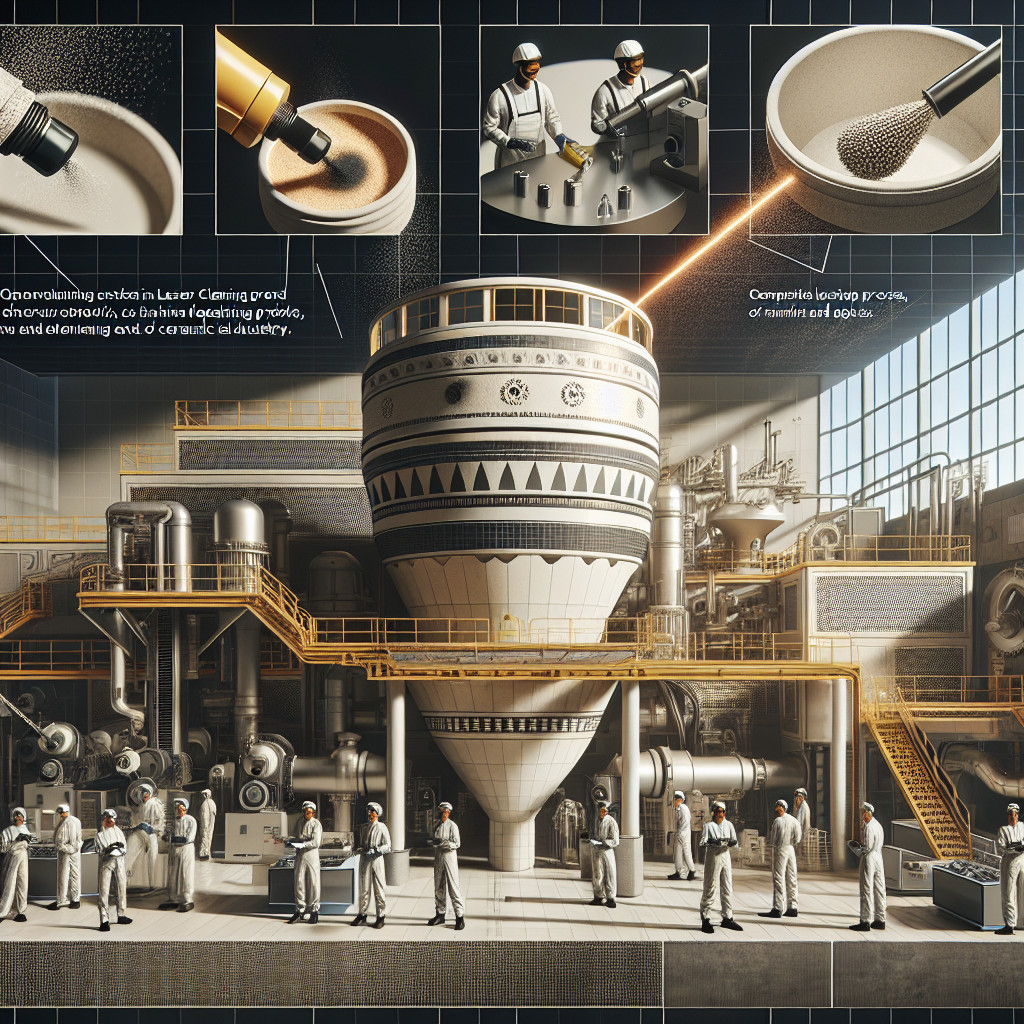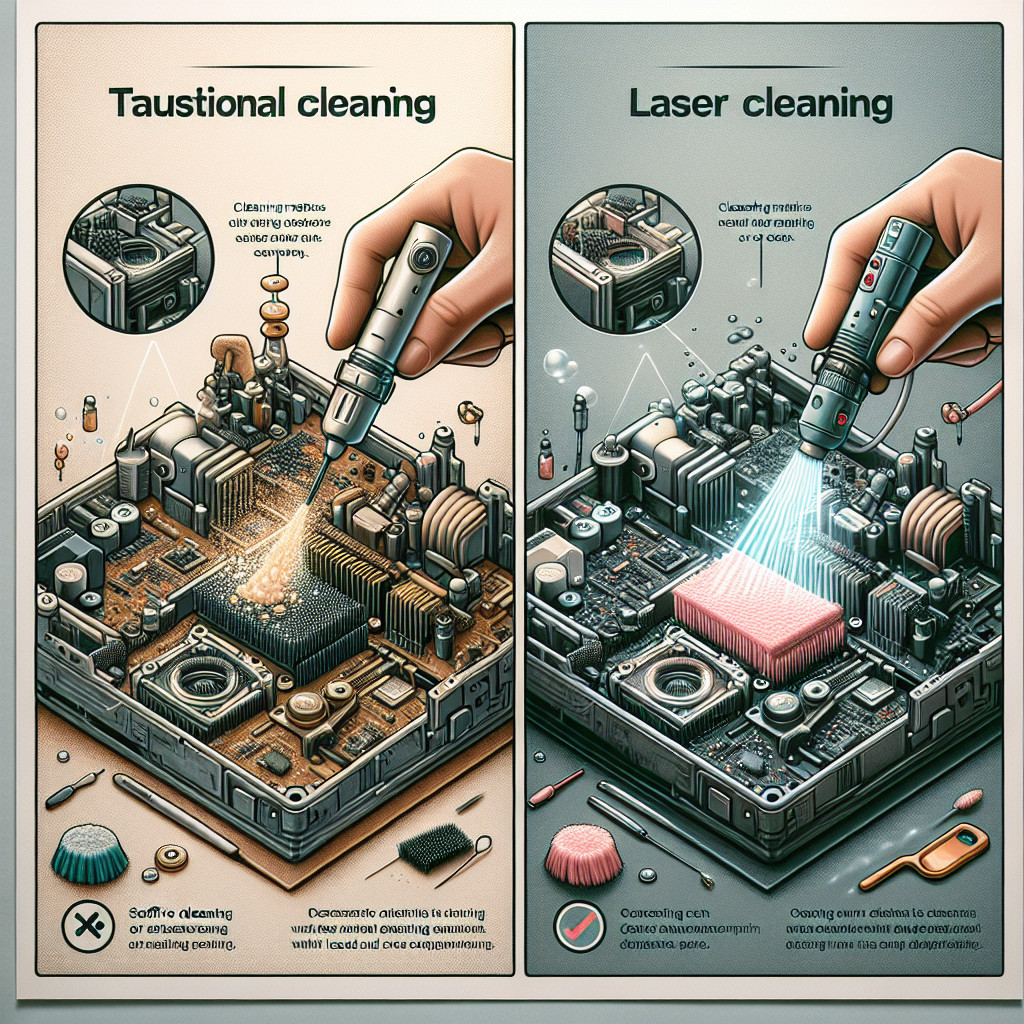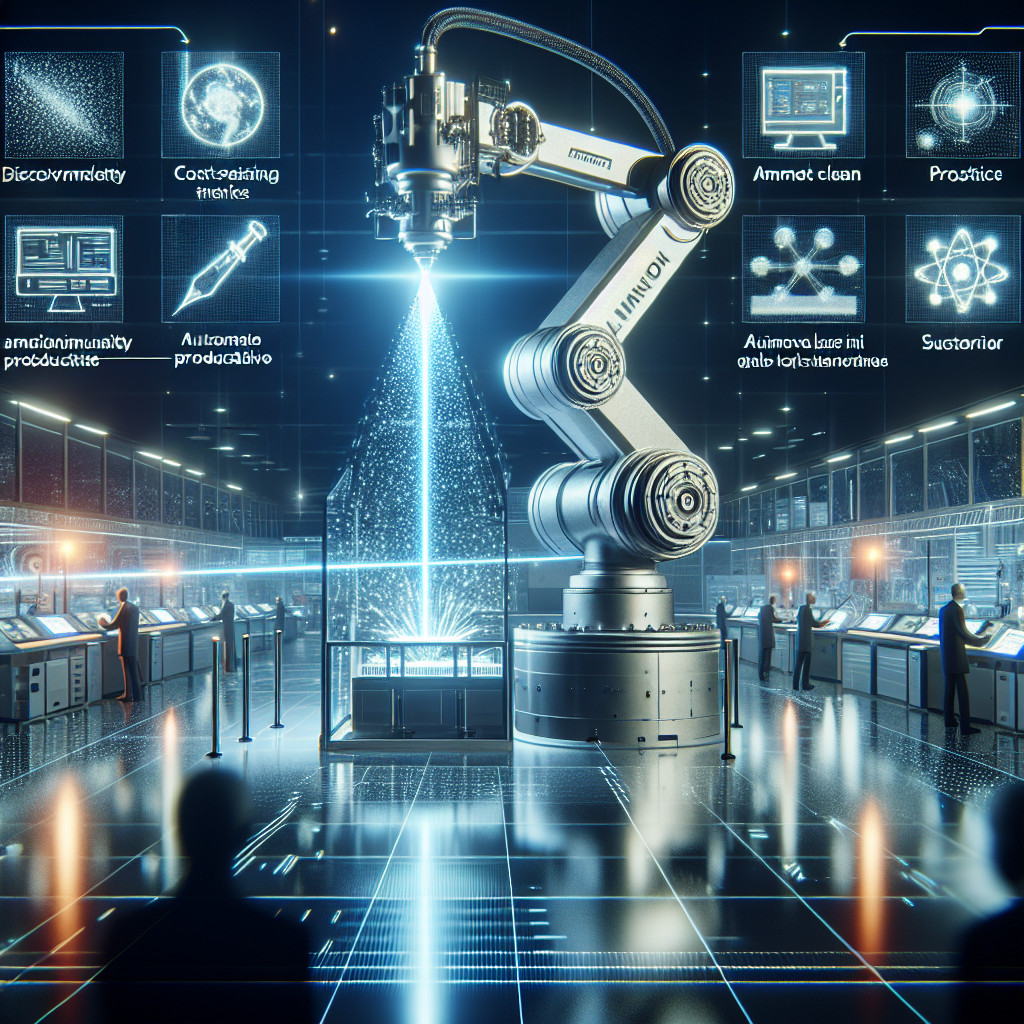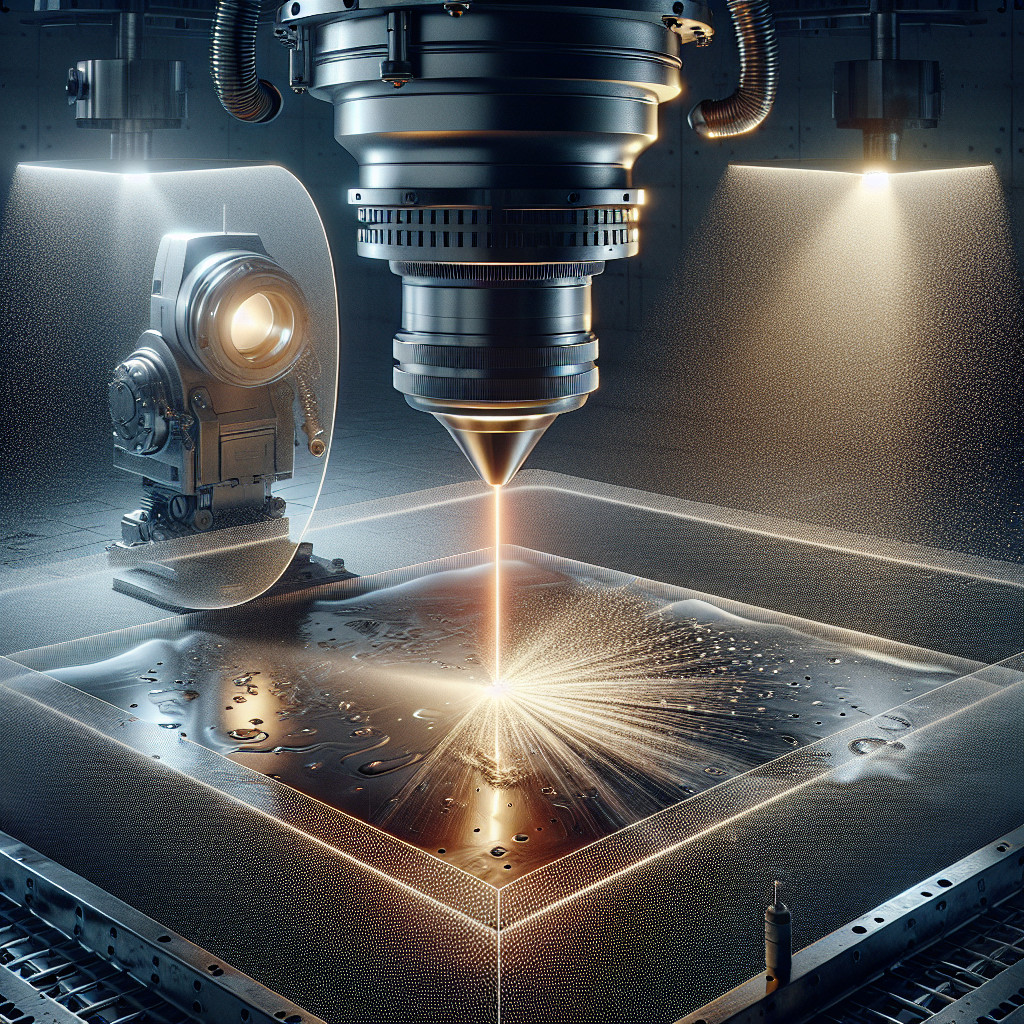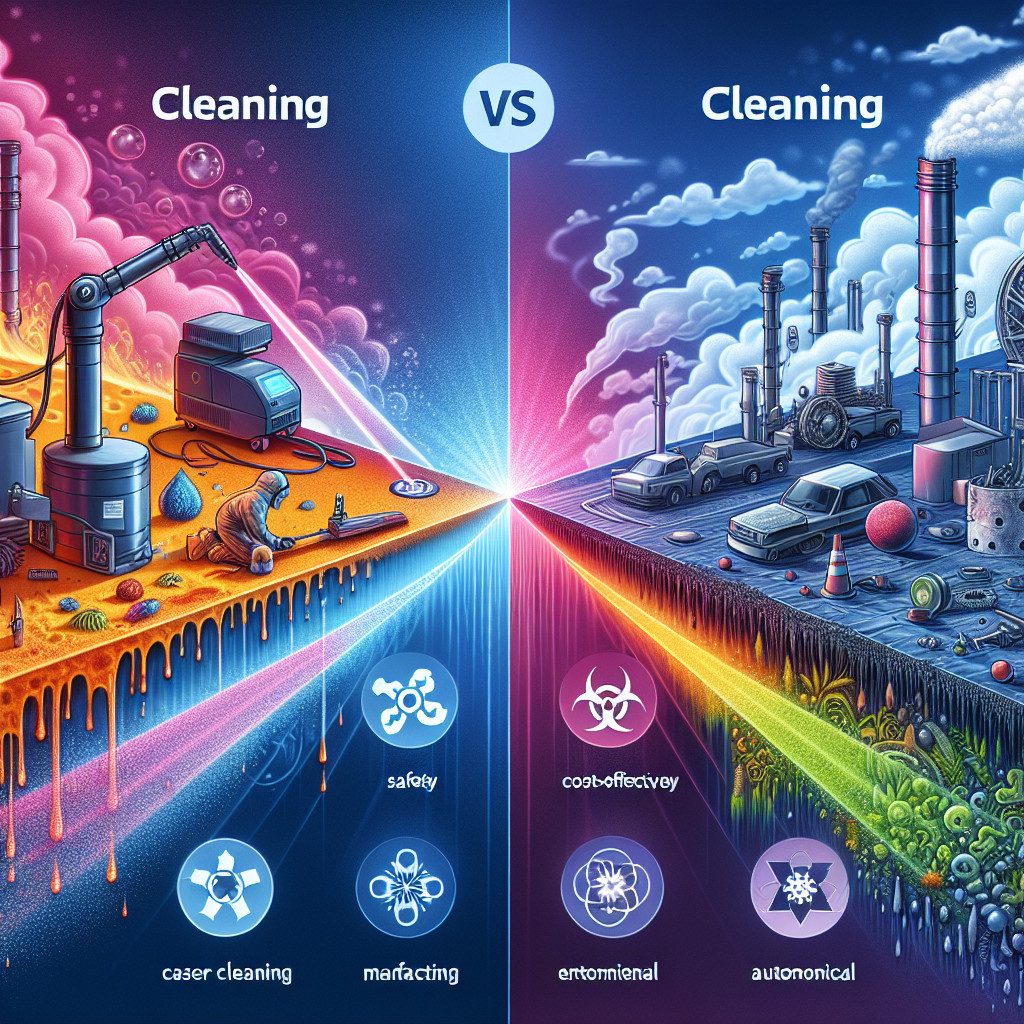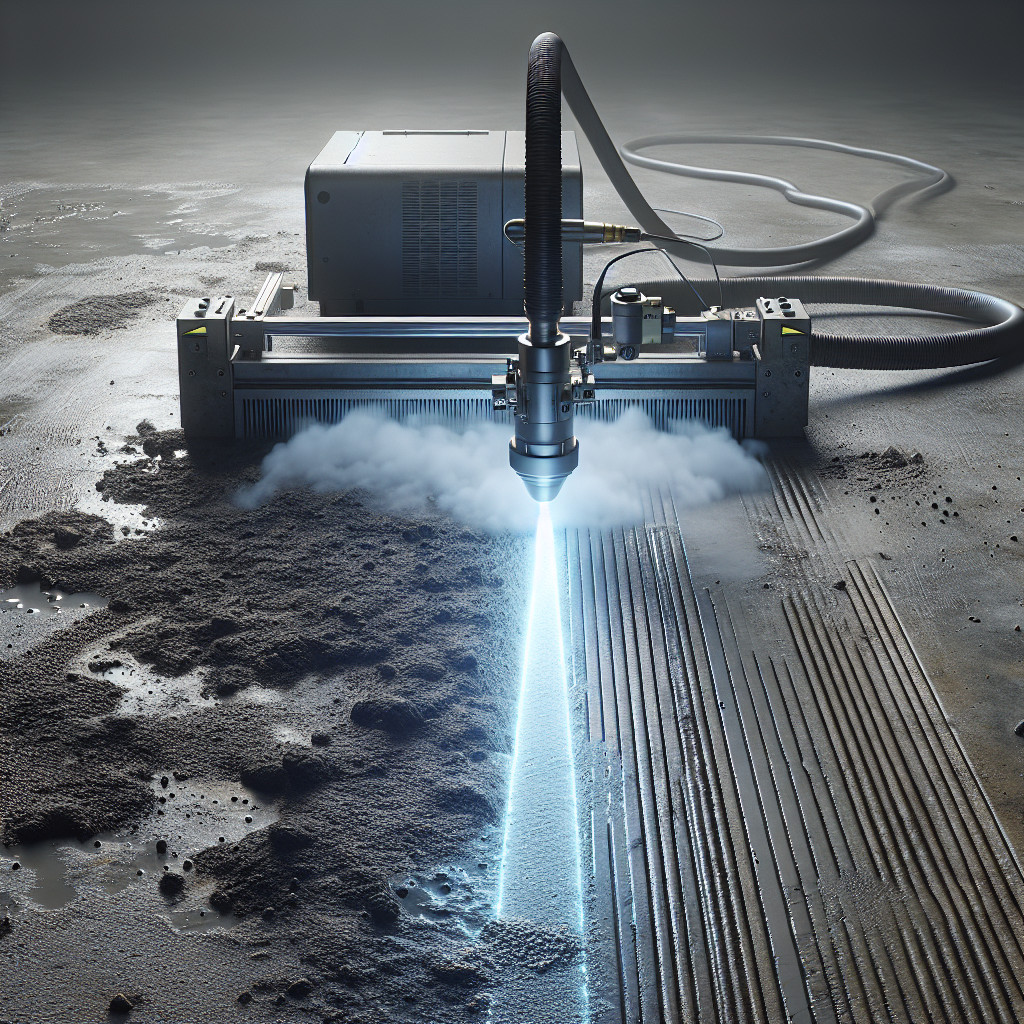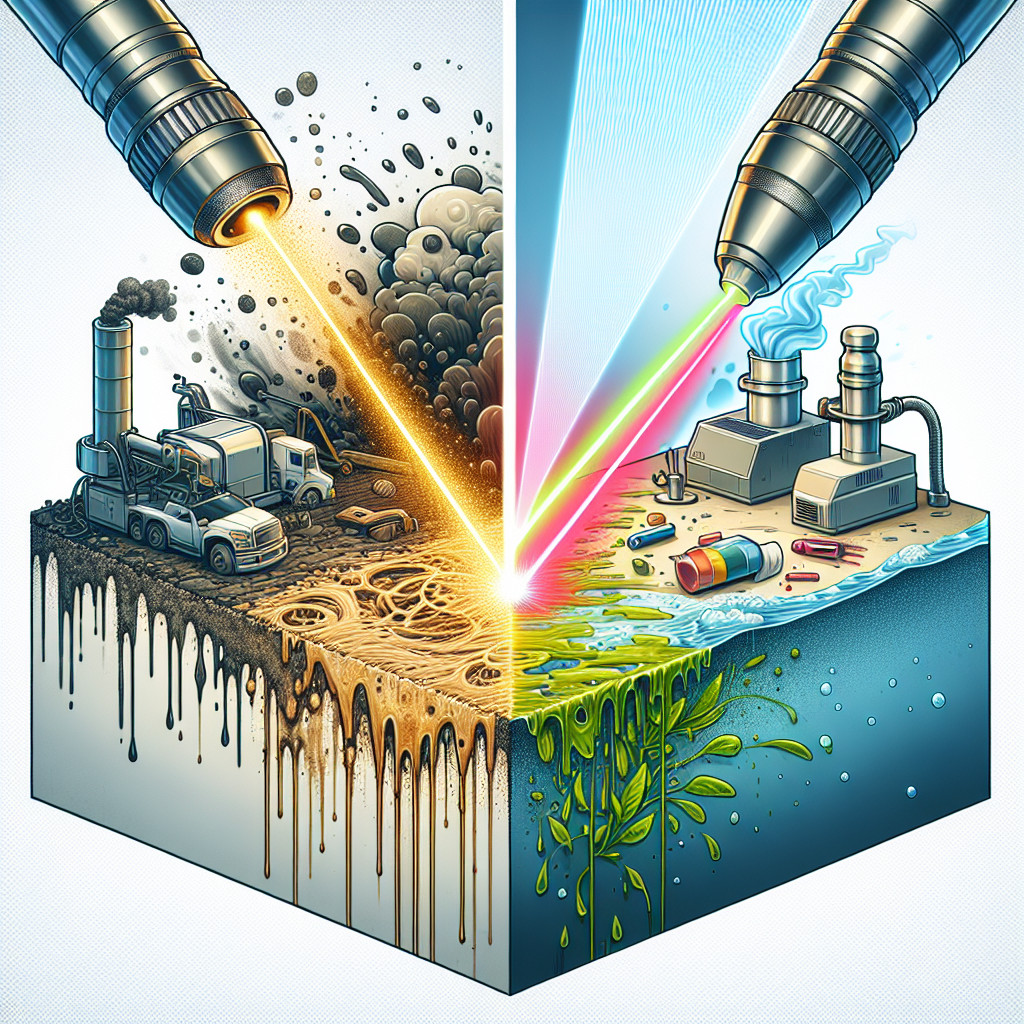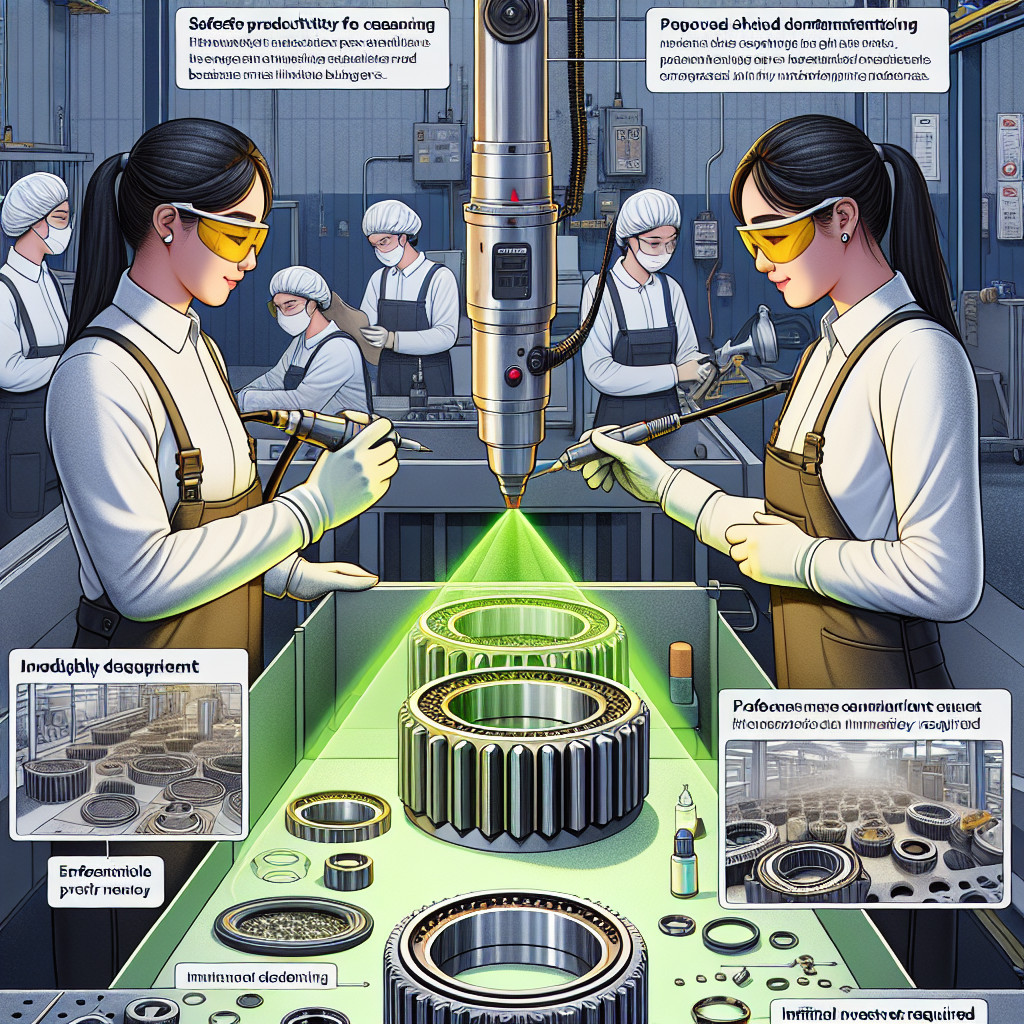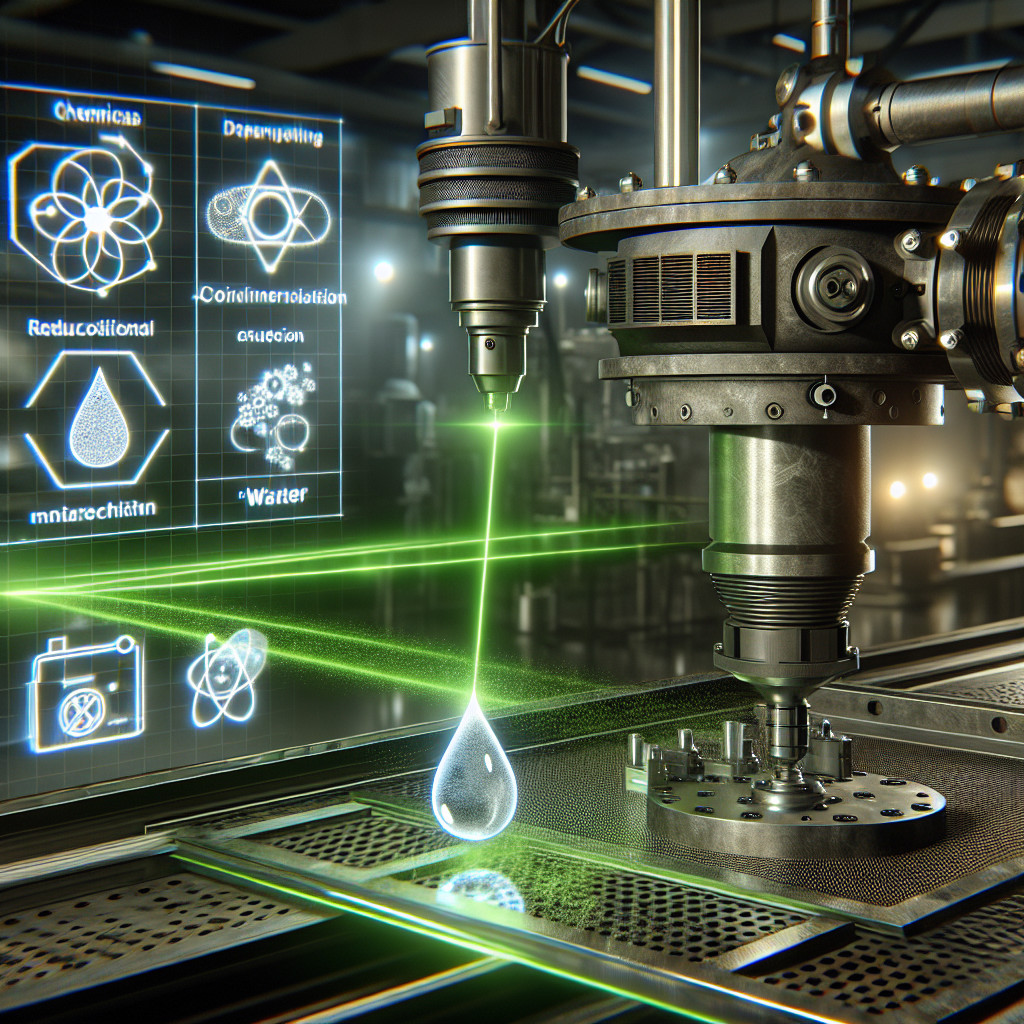
- The benefits of laser cleaning in reducing water consumption
- The environmental impact of laser cleaning on water resources
- The cost-effectiveness of laser cleaning compared to traditional cleaning methods
- The potential for laser cleaning to reduce water usage in agriculture
- The role of innovation hubs and incubators in advancing laser cleaning technology for water reduction
- The impact of laser cleaning on reducing water usage in the construction sector
- The benefits of using laser cleaning in the healthcare industry for water conservation
- The role of innovation clusters and ecosystems in advancing laser cleaning technology for water reduction
The benefits of laser cleaning in reducing water consumption
One of the main advantages of laser cleaning is its efficiency. The laser beam can target specific areas with precision, ensuring that only the contaminated areas are treated. This targeted approach minimizes the amount of water needed for cleaning, as well as the amount of cleaning agents required. In addition, laser cleaning is a non-contact process, which means that there is no physical abrasion of the surface being cleaned. This reduces the risk of damage to the surface and extends its lifespan.
Another benefit of laser cleaning is its versatility. It can be used on a wide range of materials, including metals, plastics, ceramics, and composites. This makes it ideal for a variety of industries, from manufacturing and automotive to aerospace and electronics. Laser cleaning can remove rust, paint, grease, and other contaminants from surfaces quickly and effectively, without the need for harsh chemicals or abrasive materials.
Furthermore, laser cleaning is a sustainable solution that aligns with the growing trend towards eco-friendly practices. By reducing water consumption and minimizing the use of chemicals, laser cleaning helps companies reduce their environmental impact and comply with regulations. It also improves workplace safety by eliminating the need for manual cleaning processes that can expose workers to hazardous substances.
In conclusion, laser cleaning offers numerous benefits in reducing water consumption and promoting sustainability. Its efficiency, precision, versatility, and eco-friendly nature make it a valuable tool for companies looking to improve their cleaning processes while minimizing their environmental footprint.
- Efficiency
- Precision
- Versatility
- Sustainability
- Reducing water consumption
- Minimizing environmental impact
- Improving workplace safety
#laser #cleaning #waterconsumption #sustainability #efficiency #precision #versatility #environmentalimpact #workplacesafety #ecofriendly
The environmental impact of laser cleaning on water resources
One of the main concerns regarding the environmental impact of laser cleaning on water resources is the potential for water pollution. The process of laser cleaning generates waste materials that can contain harmful chemicals and heavy metals. If these waste materials are not properly disposed of, they can leach into water sources and contaminate them.
Another issue is the energy consumption associated with laser cleaning. The use of high-powered lasers requires a significant amount of energy, which can contribute to greenhouse gas emissions and climate change. This can have indirect effects on water resources through changes in weather patterns and water availability.
Furthermore, the heat generated by lasers during the cleaning process can also have an impact on water resources. The heat can cause thermal pollution in water bodies, affecting aquatic life and ecosystems. Additionally, the use of lasers can disrupt the natural flow of water in rivers and streams, further impacting water resources.
In order to mitigate the environmental impact of laser cleaning on water resources, it is important for companies and individuals to implement sustainable practices. This includes proper waste management, energy efficiency measures, and the use of alternative cleaning methods that are less harmful to the environment.
In conclusion, while laser cleaning is an effective technology for removing contaminants from surfaces, it is important to consider its environmental impact on water resources. By implementing sustainable practices and being mindful of the potential consequences, we can minimize the negative effects of laser cleaning on water sources.
- water pollution
- energy consumption
- heat generation
- sustainable practices
- #environmentalimpact
- #waterresources
- #laser cleaning
- #sustainablepractices
The cost-effectiveness of laser cleaning compared to traditional cleaning methods
Cost comparison
When comparing the cost of laser cleaning to traditional methods such as sandblasting or chemical cleaning, it is important to consider several factors. While the initial investment in a laser cleaning system may be higher than traditional equipment, the long-term cost savings can be significant. Laser cleaning requires less maintenance, fewer consumables, and reduces the need for hazardous chemicals, resulting in lower operating costs over time.
Additionally, laser cleaning is a faster and more efficient process than traditional methods, which can lead to increased productivity and reduced labor costs. The precision of laser cleaning also minimizes the risk of damage to delicate surfaces, reducing the need for costly repairs or replacements.
Environmental impact
Another important consideration when comparing laser cleaning to traditional methods is the environmental impact. Traditional cleaning methods often involve the use of harsh chemicals or abrasive materials that can be harmful to both the environment and human health. Laser cleaning, on the other hand, is a non-contact and chemical-free process that produces minimal waste and emissions.
By choosing laser cleaning over traditional methods, companies can reduce their carbon footprint and contribute to a more sustainable future. This can also lead to cost savings in terms of compliance with environmental regulations and potential fines for improper disposal of hazardous materials.
Conclusion
In conclusion, the cost-effectiveness of laser cleaning compared to traditional methods is clear. While the initial investment may be higher, the long-term savings in operating costs, labor, and environmental impact make laser cleaning a more efficient and sustainable choice. By investing in laser cleaning technology, companies can improve their cleaning processes, increase productivity, and reduce their overall costs.
- laser cleaning
- cost-effectiveness
- traditional cleaning methods
- environmental impact
- sustainable future
- reduce carbon footprint
- compliance with environmental regulations
- long-term cost savings
#laser #cleaning #costeffectiveness #traditionalmethods #environmentalimpact #sustainablefuture #carbonfootprint #regulations #costsavings
The potential for laser cleaning to reduce water usage in agriculture
Laser cleaning works by using high-powered lasers to selectively target and destroy unwanted plants, leaving the desired crops unharmed. This technology offers several advantages over traditional methods of weed control, including:
1. Precision: Laser cleaning can target specific plants without affecting surrounding vegetation, reducing the risk of damage to crops.
2. Efficiency: Laser cleaning is a fast and effective method of weed control, allowing farmers to cover large areas in a short amount of time.
3. Sustainability: By reducing the need for herbicides and irrigation, laser cleaning can help farmers reduce their environmental impact and conserve water resources.
Studies have shown that laser cleaning can significantly reduce water usage in agriculture, with some estimates suggesting that it could cut water consumption by up to 50%. This reduction in water usage not only helps to address concerns about water scarcity, but also offers potential cost savings for farmers.
While laser cleaning technology is still relatively new in agriculture, it has the potential to revolutionize the way we think about weed control and water usage in farming. As the technology continues to improve and become more affordable, we may see a shift towards more sustainable and efficient farming practices in the future.
Overall, laser cleaning offers a promising solution to the challenges of water scarcity and environmental sustainability in agriculture. By reducing water usage and improving weed control, this technology has the potential to help farmers increase their productivity and reduce their environmental impact.
#laser cleaning #water usage #agriculture #sustainability #weed control
frazy kluczowe:
1. Laser cleaning technology in agriculture
2. Water conservation in farming
3. Sustainable weed control methods
4. Environmental benefits of laser cleaning
5. Improving efficiency in agriculture
The role of innovation hubs and incubators in advancing laser cleaning technology for water reduction
In order to advance laser cleaning technology for water reduction, innovation hubs and incubators play a crucial role. These organizations provide a supportive environment for startups and researchers to develop and commercialize new technologies. By fostering collaboration and providing access to resources, innovation hubs and incubators help accelerate the development and adoption of innovative solutions like laser cleaning technology.
Here are some key ways in which innovation hubs and incubators contribute to the advancement of laser cleaning technology for water reduction:
1. Funding opportunities: Innovation hubs and incubators often provide funding to support research and development efforts. This financial support can help startups and researchers overcome the initial barriers to entry and accelerate the development of laser cleaning technology.
2. Access to expertise: Innovation hubs and incubators bring together experts from various fields, including engineering, materials science, and environmental science. This multidisciplinary approach can help address complex challenges and drive innovation in laser cleaning technology.
3. Networking opportunities: Innovation hubs and incubators provide a platform for startups and researchers to connect with potential partners, investors, and customers. By facilitating networking opportunities, these organizations help accelerate the commercialization of laser cleaning technology.
4. Testing and validation: Innovation hubs and incubators often have access to state-of-the-art facilities for testing and validating new technologies. This infrastructure can help startups and researchers demonstrate the effectiveness and reliability of laser cleaning technology for water reduction.
Overall, innovation hubs and incubators play a critical role in advancing laser cleaning technology for water reduction. By providing funding, expertise, networking opportunities, and testing facilities, these organizations help accelerate the development and adoption of sustainable cleaning solutions.
#innovation #technology #sustainability #laser #cleaning #waterreduction
Keywords: innovation, technology, sustainability, laser cleaning, water reduction
Long-tail phrases: laser cleaning technology for water reduction, sustainable cleaning solutions, innovation hubs and incubators, environmental impacts of traditional cleaning methods.
The impact of laser cleaning on reducing water usage in the construction sector
By eliminating the need for water in the cleaning process, laser cleaning can help construction companies reduce their water usage and minimize their environmental impact. This is especially important in regions where water resources are limited, as it allows for more sustainable construction practices.
In addition to reducing water usage, laser cleaning also offers other benefits such as increased efficiency, cost savings, and improved safety. The precision of laser technology allows for more targeted cleaning, resulting in less material waste and a higher quality finish.
Furthermore, laser cleaning eliminates the need for harsh chemicals often used in traditional cleaning methods, making it a safer and more environmentally friendly option for construction projects. This can help companies comply with regulations and reduce their carbon footprint.
Overall, the impact of laser cleaning on reducing water usage in the construction sector is significant. By adopting this technology, construction companies can not only improve their sustainability practices but also contribute to the conservation of water resources for future generations.
- Reduced water usage
- Increased efficiency
- Cost savings
- Improved safety
- Environmental impact
- Water scarcity
- Sustainable construction
- Laser cleaning technology
- Environmental regulations
- Carbon footprint
#waterconservation, #sustainableconstruction, #laser cleaning, #environmentalimpact, #waterscarcity
The benefits of using laser cleaning in the healthcare industry for water conservation
Efficiency and precision
Laser cleaning is a highly efficient method of removing contaminants from surfaces, such as medical equipment, without the need for water or chemicals. This precision cleaning process ensures that all bacteria and pathogens are effectively eliminated, reducing the risk of infections in healthcare settings.
Water conservation
One of the key benefits of using laser cleaning in the healthcare industry is its minimal water usage. Traditional cleaning methods often require large amounts of water, which can be wasteful and harmful to the environment. Laser cleaning, on the other hand, uses minimal water or no water at all, making it a more sustainable option for healthcare facilities.
Cost-effectiveness
While the initial investment in laser cleaning equipment may be higher than traditional cleaning methods, the long-term cost savings are significant. By reducing water usage and the need for cleaning chemicals, healthcare facilities can save money on utility bills and cleaning supplies.
Reduced environmental impact
By using laser cleaning, healthcare facilities can significantly reduce their environmental footprint. The minimal water usage and lack of harmful chemicals make laser cleaning a more eco-friendly option for maintaining cleanliness in medical settings.
Improved safety
Laser cleaning is a safe and non-toxic method of cleaning, which is particularly important in healthcare settings where patient safety is paramount. Unlike traditional cleaning methods that may leave behind harmful residues, laser cleaning ensures a thorough and safe cleaning process.
Conclusion
Overall, the benefits of using laser cleaning in the healthcare industry for water conservation are clear. From improved efficiency and cost-effectiveness to reduced environmental impact and enhanced safety, laser cleaning offers a sustainable and effective solution for maintaining cleanliness in medical facilities.
- Efficiency and precision
- Water conservation
- Cost-effectiveness
- Reduced environmental impact
- Improved safety
- Efficiency and precision
- Water conservation
- Cost-effectiveness
- Reduced environmental impact
- Improved safety
#laser cleaning #healthcare industry #water conservation #sustainability #efficiency #cost-effectiveness #environmental impact #safety #medical facilities
The role of innovation clusters and ecosystems in advancing laser cleaning technology for water reduction
By fostering collaboration and knowledge sharing, innovation clusters create an environment where ideas can flourish and innovations can be rapidly developed and brought to market. In the case of laser cleaning technology, these clusters have played a vital role in driving research and development efforts, as well as in facilitating the adoption of this technology by companies across various industries.
One of the key benefits of innovation clusters is their ability to attract talent and resources from diverse sources. By bringing together experts from different fields, these clusters can leverage a wide range of skills and knowledge to tackle complex challenges. This multidisciplinary approach has been instrumental in advancing laser cleaning technology, as it has allowed researchers to explore new applications and improve the efficiency and effectiveness of laser cleaning systems.
Another important aspect of innovation clusters is their role in creating a supportive ecosystem for technology development. By providing access to funding, infrastructure, and expertise, these clusters enable companies to overcome barriers to innovation and accelerate the commercialization of new technologies. In the case of laser cleaning technology, this ecosystem has been essential in driving the adoption of this technology and in helping companies integrate it into their operations.
Overall, innovation clusters and ecosystems play a critical role in advancing laser cleaning technology for water reduction. By fostering collaboration, driving research and development efforts, and creating a supportive environment for technology development, these clusters have helped accelerate the adoption of this sustainable cleaning technology. As companies continue to prioritize sustainability and environmental responsibility, innovation clusters will play an increasingly important role in driving the development and adoption of new technologies that can help reduce water consumption and minimize environmental impact.
- innovation clusters
- ecosystems
- laser cleaning technology
- water reduction
- sustainable practices
- environmental impact
- collaboration
- research and development
- commercialization
- multidisciplinary approach
- technology development
- supportive ecosystem
- barriers to innovation
- commercialization
- environmental responsibility
#sustainable #innovation #technology #laser #cleaning #waterreduction #environment #collaboration #research #development #ecosystem #clusters
- Laser cleaning and long-term cost savings – cost analysis - February 29, 2024
- Laser cleaning and reducing emissions of harmful substances - February 28, 2024
- Can laser cleaning be used in veterinary medicine? - February 28, 2024









